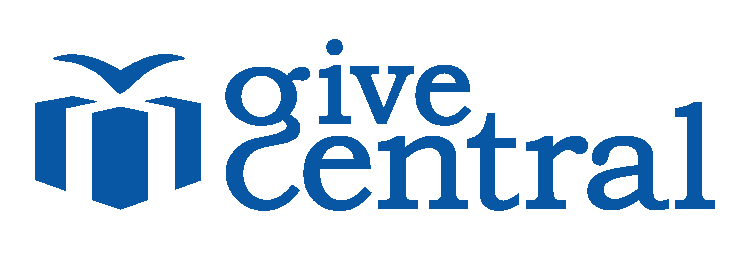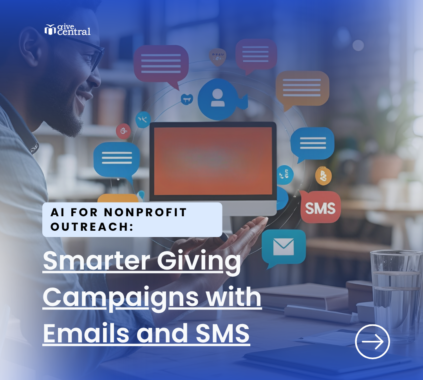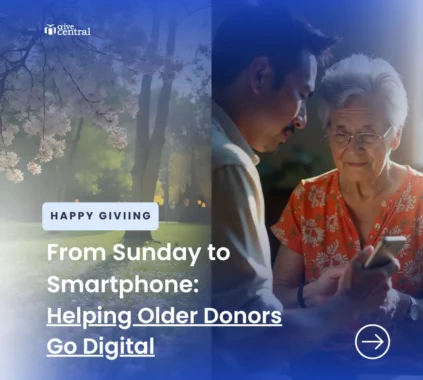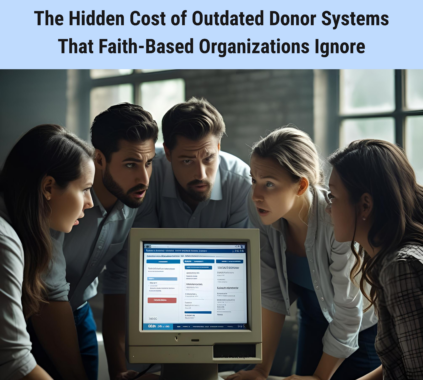Every year we get a little close to going digital. Just think of it – media is digital, cameras are digital and so is the retail. According to the most recent survey by the Giving Institute more and more donors give online. So, it is important for churches to adapt to these changes too and give their members the option of .
Online payment process
As you think giving an online options for your donors try these three electronic payment types, see what your church members think:
- Through their credit card
- Electronic Fund Transfer for recurring donation
- Automated Clearing House
Evaluating an e-giving solution
As there are numerous programs that offer the service of online giving, a church should be cautious as to what solution they choose for their congregation.
Here are a few points to remember as you choose the right program:
- The frequency of giving: Is the program able to give multiple options for fund transfers? Are there any schedules for recurring donations? The donor should be capable of linking their bank accounts for donation capability with weekly, biweekly or monthly automatic fund deduction capability. Donating frequently should be made easy.
- Easy to pledge options: Will the donor be able to pledge an amount for donation and then the payment for the pledge is scheduled over a certain period of time? Can the donor make a down payment on the pledge? Will he/she be able to make a down payment from one account and then charge the rest to another account?
- Confidentiality preference: Will a donor be able to remain anonymous?
- The process of transaction: What is the duration of the process of fund transfer? How much time does it take for the money to go from donor’s account to bank’s account? How much time does the application processing take these data? And what and how much fee is charged for the process?
- Security: Does the program comply with the guidelines of a safe transaction?
- PCI compliance
- 128-bit secure browser connection for safe data handling
- Secure Sockets Layer (SSL) for information encryption.
- End to end data management. Donor’s card details and account information should be discreet. There should be no third party involved in handling the fund transfer.
- Price: When buying any product or service the top concern is the cost. Many service providers give unrealistic promises of the increase in the number of online participants in given number of year. But such predictions hardly meet their promise and are very misleading. Much of their charging fees is unexpected and can greatly hamper the collection capability of a church. Fees that are related to the size of the church or factors like how many already are giving and how many will readily switch to online giving, all these matters greatly when you are choosing a software solution. Hidden fees can bury the church in expenses that will make the service exorbitant.
- Advertising: Will the vendor also provide the service of promotion? Often the staff at church is not ready to encourage people to donate beyond the walls of the church. So asking the church members to become interested in the new online giving method will require some assistance. You will need a service provider who will help in launching and promoting the program. Many a time the participation in online giving can see a sudden spike but then slows and falls down gradually. The program should be capable analyse giving habits and advise long-term strategies for donation collection.
Online giving should be promoted in every way possible even to members who aren’t that frequent to church. Promoting online giving can be a hard task if the attendance lays low throughout the year. Integration with any social platform can greatly boost exposure of the new giving habit to other members. Attracting potential donors has to be a constant effort. It is imperative to look into expenses of these promotions before you decide on a service provider.
- Information: Will the reports of online contribution be available, and in what form? Will the integration of information be automated to enable transfer of data to donation management software? An efficient bookkeeper tracks the donor by funds donated to measure the effective way of using a program. But if the data handling is too complicated a person can falter and margin of error becomes bigger. Also, it shouldn’t be too overwhelming so as to teach a new staff member. The service provider should offer teaching tools and train to help the church staff in organizing data in the most efficient way.
- Updates: The vendor should provide frequent updates to keep pace with the changing habits of the donors and to sync with the collection strategies of the churches. The program should be up-to-date and have the most contemporary functionalities. If the application for mobile phones is available then it should provide flexible payment methods and easy donation process. As more people are using smartphones these days, online finance option is now steadily being used by people. Every detail ranging from likeability and functionality of the application to the security provided should be updated as frequently as possible to adhere to changes in need and demand. This will help in maximizing participation in online giving.
Just like you would go to a store to get your groceries, so should you go online to reach your donors for charitable giving. By going where your donors are you are increasing the likelihood of engaging them not just for that collection, but for recurring long-term charitable relationship. Online giving should be a top priority on your long list of things to do. But remember, we are here to help make your fundraising effort easier. Talk to us by leaving a comment below!
charitable giving credit card e giving Mobile Giving nonprofit giving online giving recurring donation
Last modified: July 28, 2017

















Los consejos sobre la creación de lÃneas de asunto efectivas fueron muy valiosos.
Reliable high-risk merchant processors offer tailored solutions for your business challenges.
[url=https://vksu.top/sb/Dzhon-Uik-4][img]https://i.imgur.com/oaaW2IC.jpg[/img][/url]
Джон Уик 4 фильм 2023 смотреть онлайн Оставляя за собой горы трупов, Джон Уик продолжает скрываться от всевозможных наёмных убийц, и теперь охоту на него возглавляет молодой и честолюбивый член Правления по имени Маркиз. Два управляющих отелями «Континенталь» в Нью-Йорке и Осаке, решившие по старой дружбе помочь своенравному киллеру, уже жестоко за это поплатились, но внезапно Джон узнаёт способ выбраться из этой, казалось бы, безвыходной ситуации.
Get a professionally verified Stripe account from this trusted provider.
I’ve been using CBD gummies for or [url=https://www.cornbreadhemp.com/pages/which-cbd-gummies-help-quit-smoking ]best cbd gummies to quit smoking[/url] a year for the nonce, and I can’t believe how much they’ve improved my preoccupation! The flavors are motionless savoury, making it a amusing share of my day after day routine. My apprehension and prominence levels partake of significantly decreased, and my beauty sleep distinction has improved tremendously. I wake up premonition more refreshed and energetic. Even so, I’ve noticed a tittle of drowsiness during the lifetime, and I wish the effects lasted a whit longer. Despite these unimportant issues, I much push these CBD gummies after anyone looking to enrich their well-being naturally!
I’ve been using CBD gummies in return or https://www.cornbreadhemp.com/blogs/learn/cbda-vs-cbd a year conditions, and I can’t have the courage of one’s convictions pretend how much they’ve improved my preoccupation! The flavors are at rest savoury, making it a delightful renounce of my day after day routine. My anxiety and distress levels contain significantly decreased, and my beauty sleep distinction has improved tremendously. I wake up sensibility more refreshed and energetic. Be that as it may, I’ve noticed a bit of drowsiness during the era, and I wish the effects lasted a bit longer. Despite these minor issues, I highly push these CBD gummies representing anyone looking to enhance their well-being naturally!
Prepare your website for sustained success in 2024 and beyond with these proven backlink resources for SEO backlink websites 2024.
Build a diverse and effective backlink profile that supports your SEO goals with SEO backlink websites 2024.